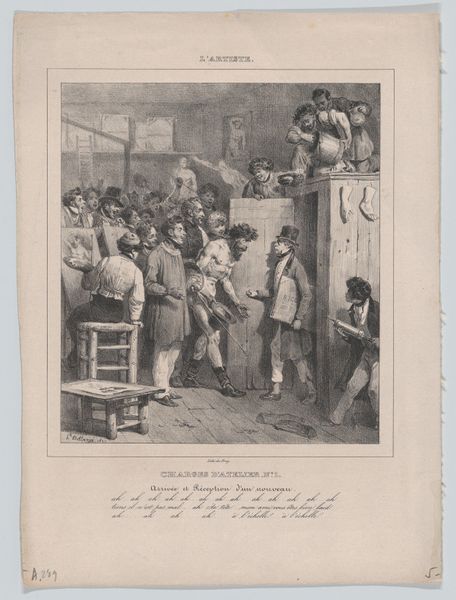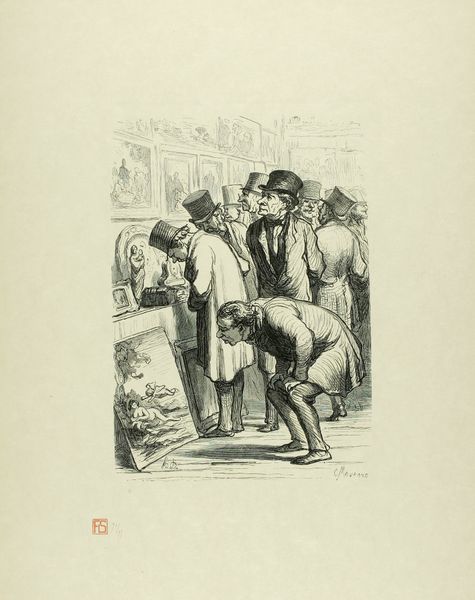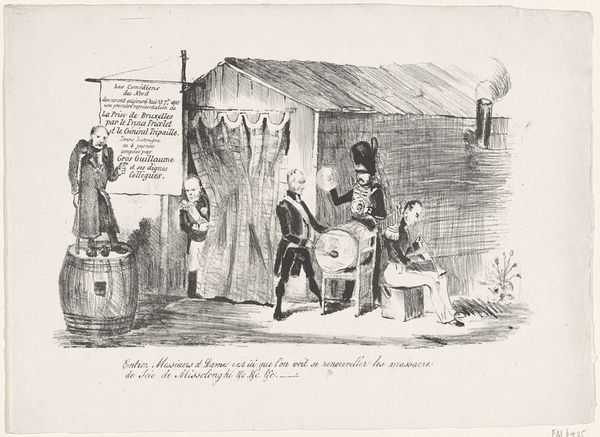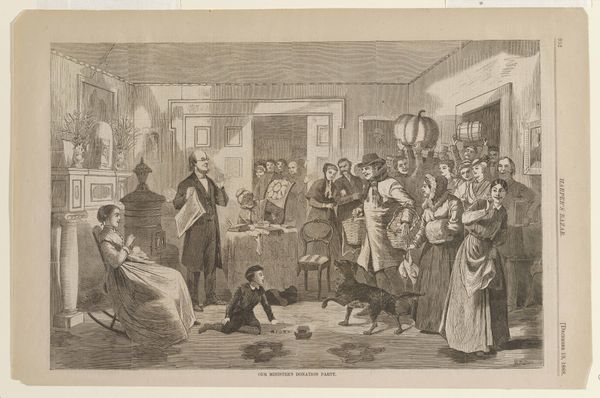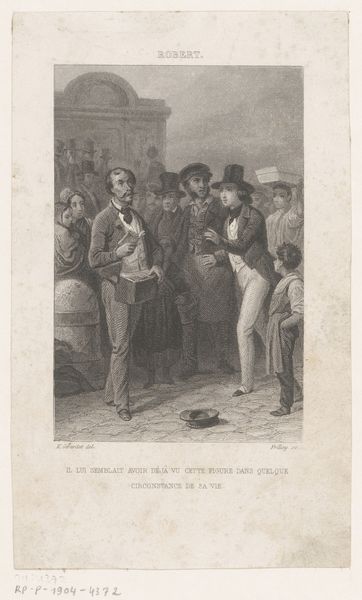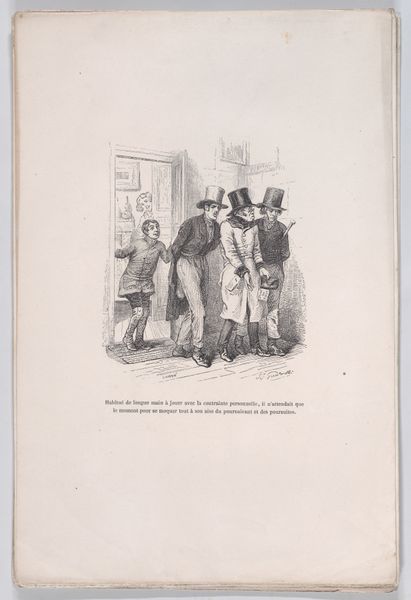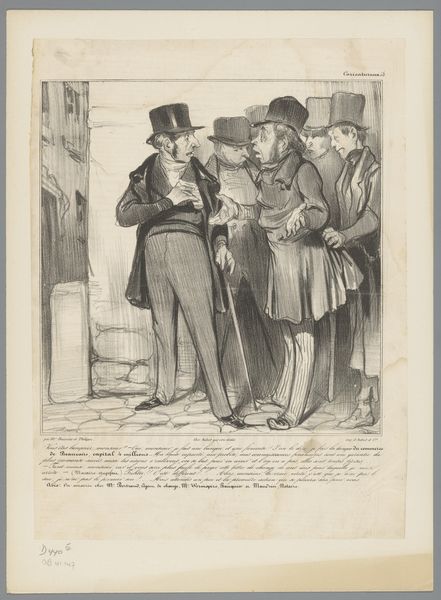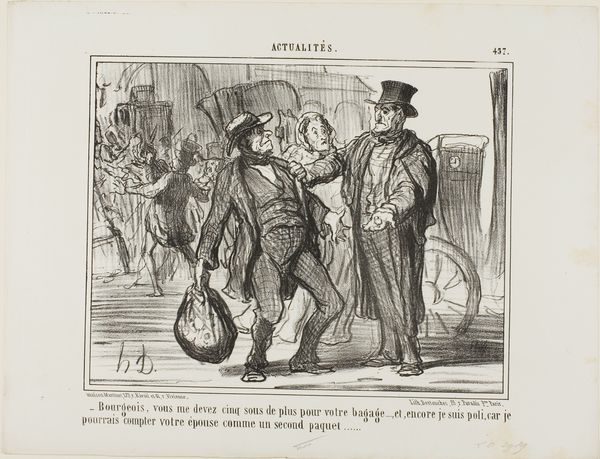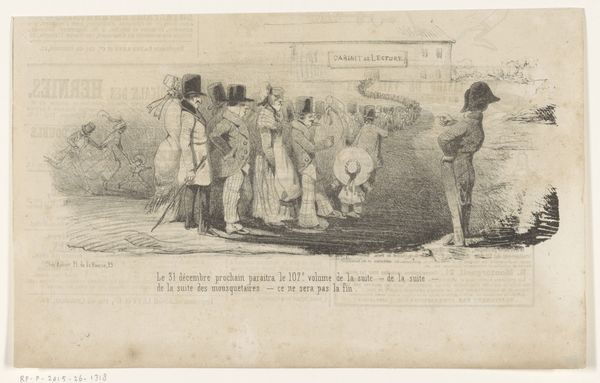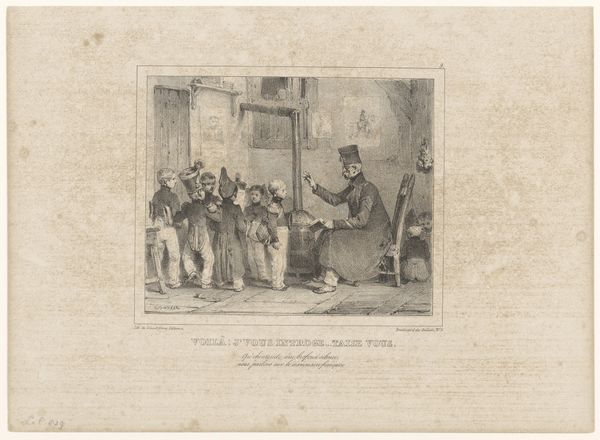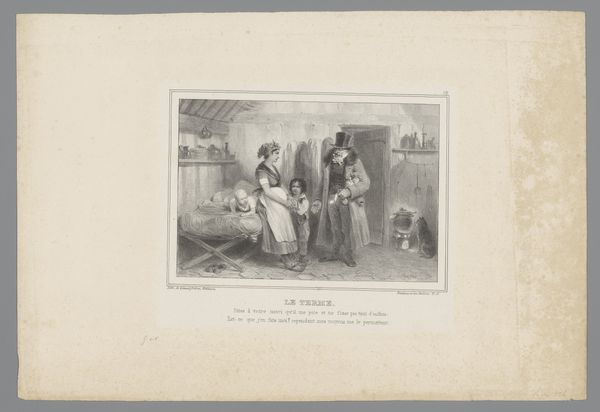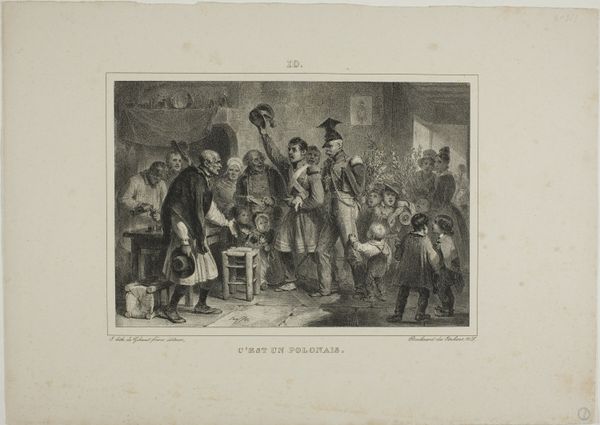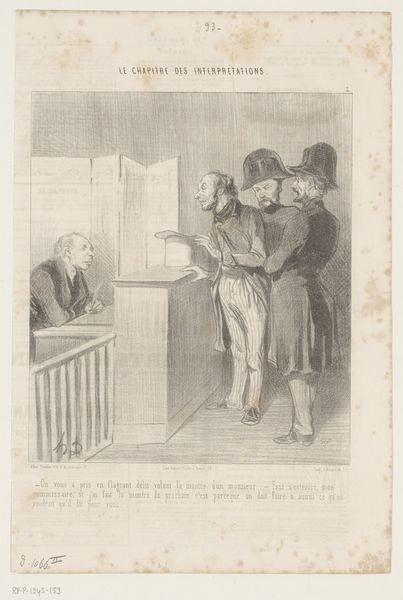
Titelprent met kaartverkoper die mensen aanmoedigt om kaarten te kopen 1823
0:00
0:00
lithograph, print
#
16_19th-century
#
narrative-art
#
lithograph
# print
#
figuration
#
romanticism
#
line
#
genre-painting
Dimensions: height 233 mm, width 280 mm
Copyright: Rijks Museum: Open Domain
Curator: Let’s discuss Hippolyte Bellangé’s lithograph from 1823, held at the Rijksmuseum; it's titled "Titelprent met kaartverkoper die mensen aanmoedigt om kaarten te kopen.” Quite a mouthful, isn't it? Editor: It is! My first impression is one of controlled chaos, somehow. The energy is palpable, even in this greyscale rendering of the crowd jostling for tickets. I immediately notice the figures closest to the picture plane: The vendor pointing, beckoning people to purchase. Curator: Indeed. The artist utilizes the precise linearity afforded by lithography, and there’s a visual structure. The sign held by the vendor forms a central axis, bisecting the composition. Note how Bellange has employed this formal structure of signs—announcing ‘Troquis lithographiques par H Bellange 1823’, as well as a price list for available seating—to reinforce this social theater, where art becomes just another spectacle to be bought and consumed. The very line quality is used in different techniques, from tight hatched shadows to almost free line for figures on the outskirts. Editor: Absolutely. And observe the archetypal roles these figures play. You see the top-hatted bourgeois gentlemen, and even families, with women clutching the hands of children in the foreground. The visual language, the codes being used, suggest this shared cultural ritual—the thrill of witnessing the narrative within a theater. I sense that the work seems to capture that hunger for entertainment and also suggests something profound about communal experience. Curator: I agree the figures have archetypal qualities, each face is carefully modeled. However, observe the spatial arrangement closely, how it mimics that of a theatrical space itself. And how the line weights of some of those further-back figures dissolves and blurs our gaze, mimicking fading and memory. Note, too, the function of romanticism, framing the drama through the very surface of the lithograph! Editor: It's remarkable how much information Bellange conveys with such a limited tonal range. One could unpack the notion of theater and performance contained in these carefully placed figures ad infinitum. Thank you for that deep-dive into technique and structure. Curator: My pleasure. It always surprises me how formal analysis can amplify emotional narrative.
Comments
No comments
Be the first to comment and join the conversation on the ultimate creative platform.
